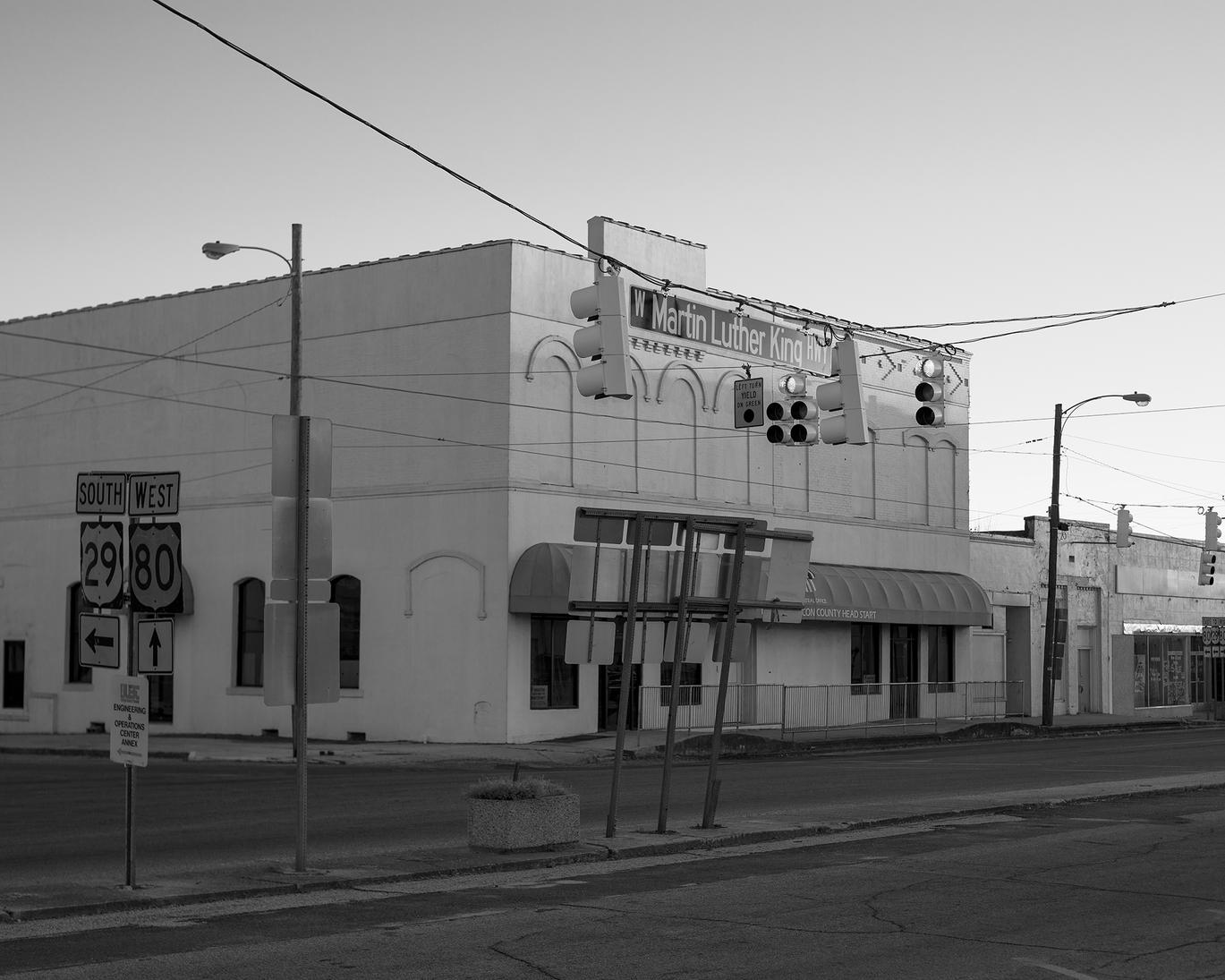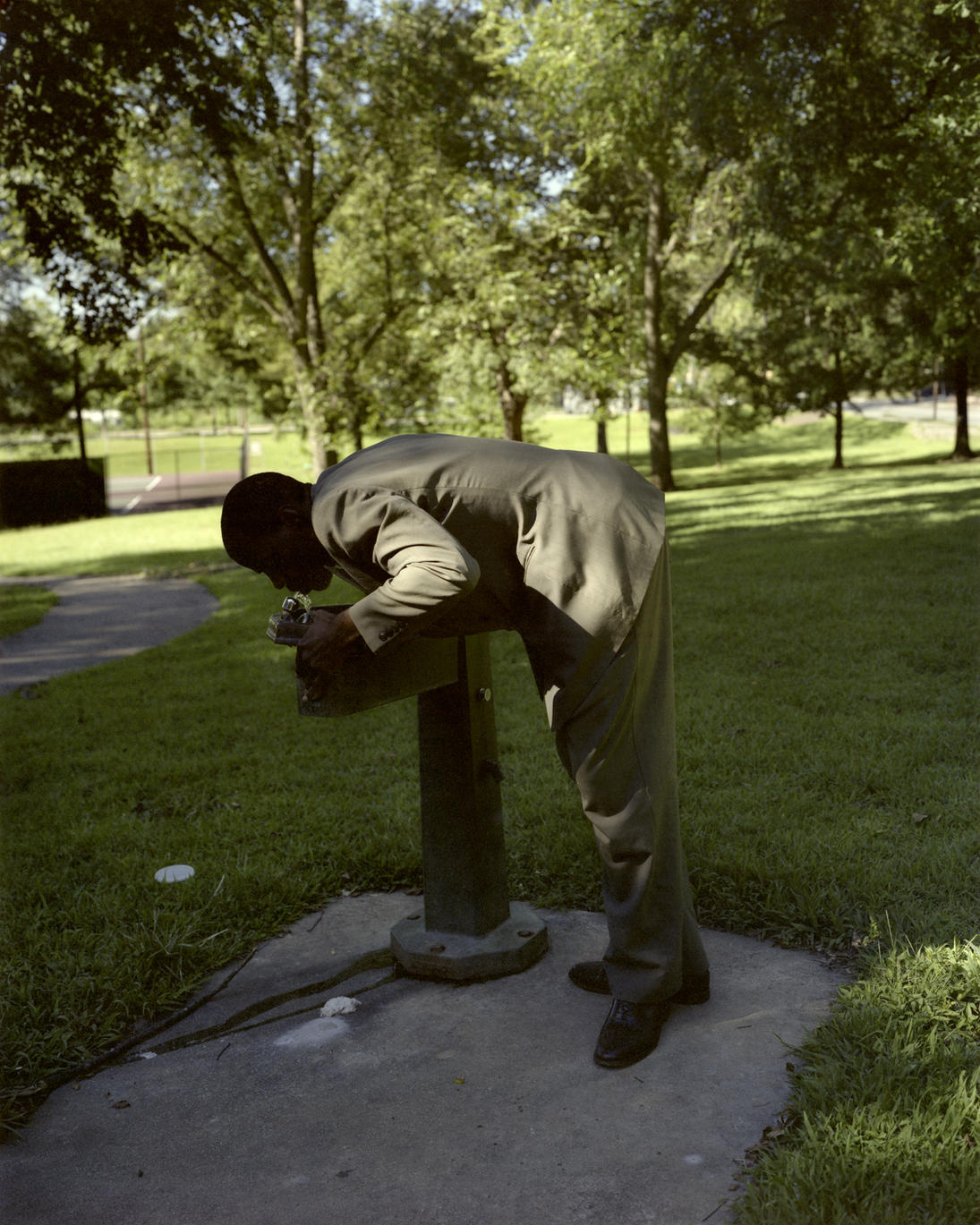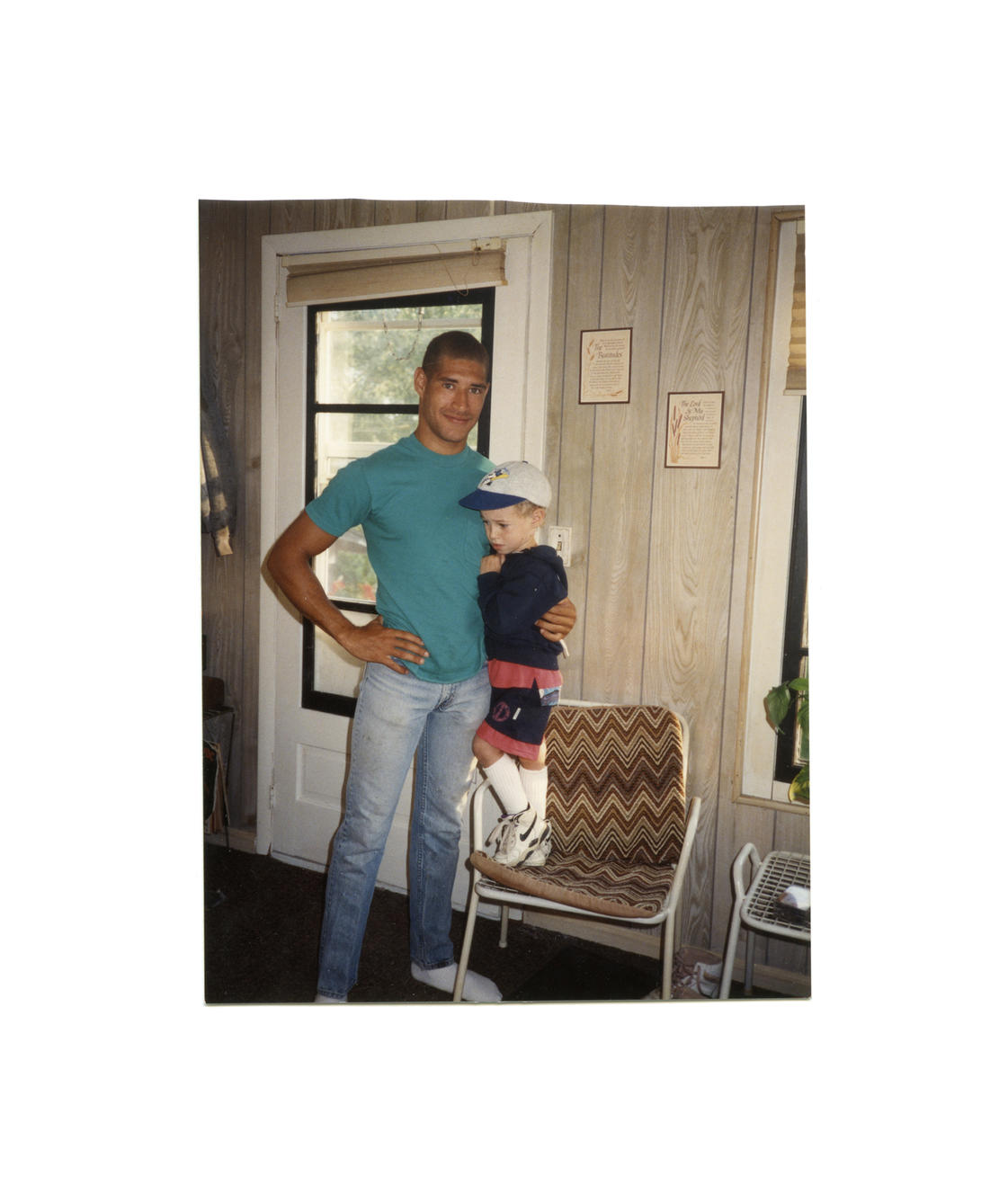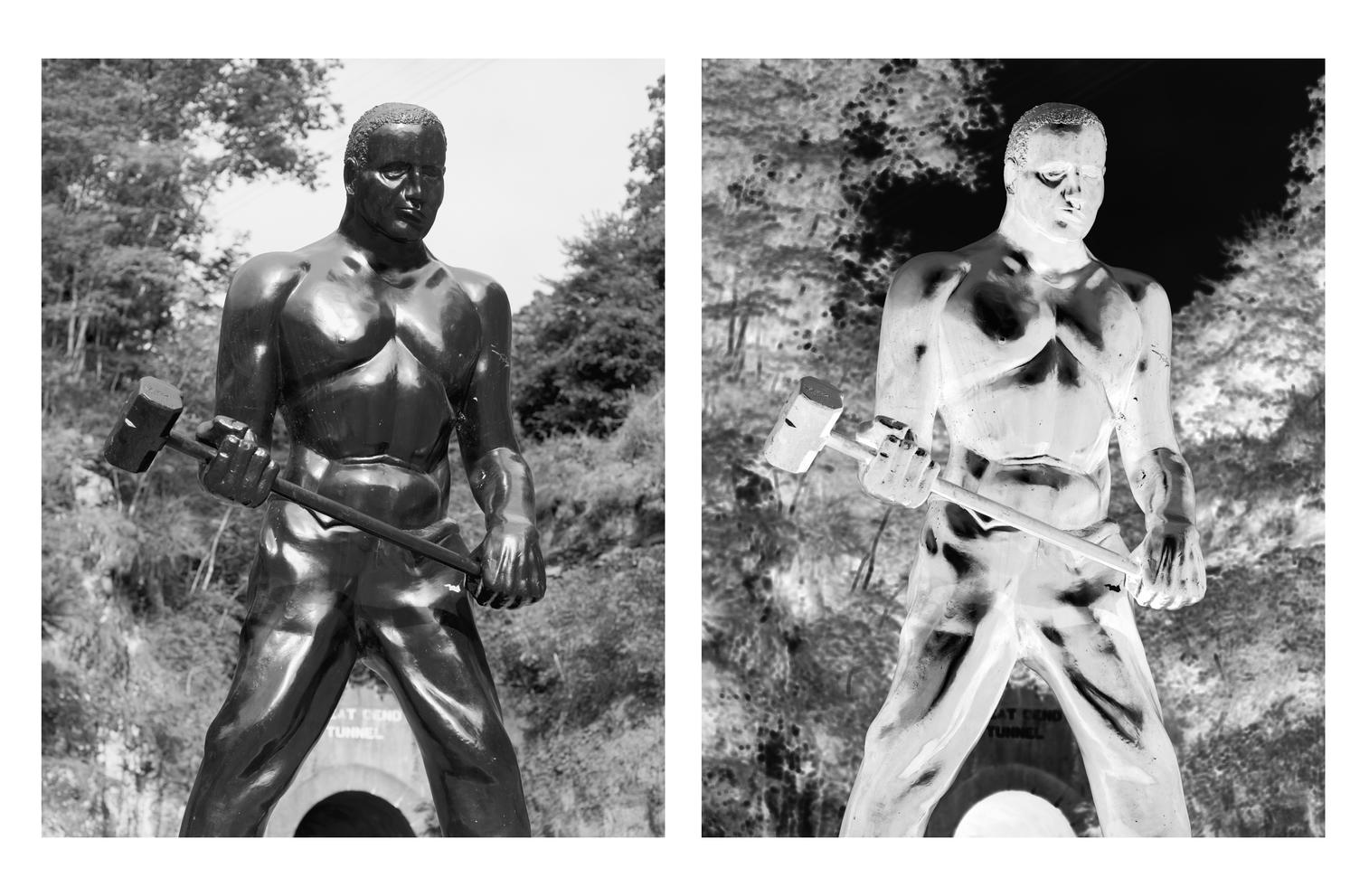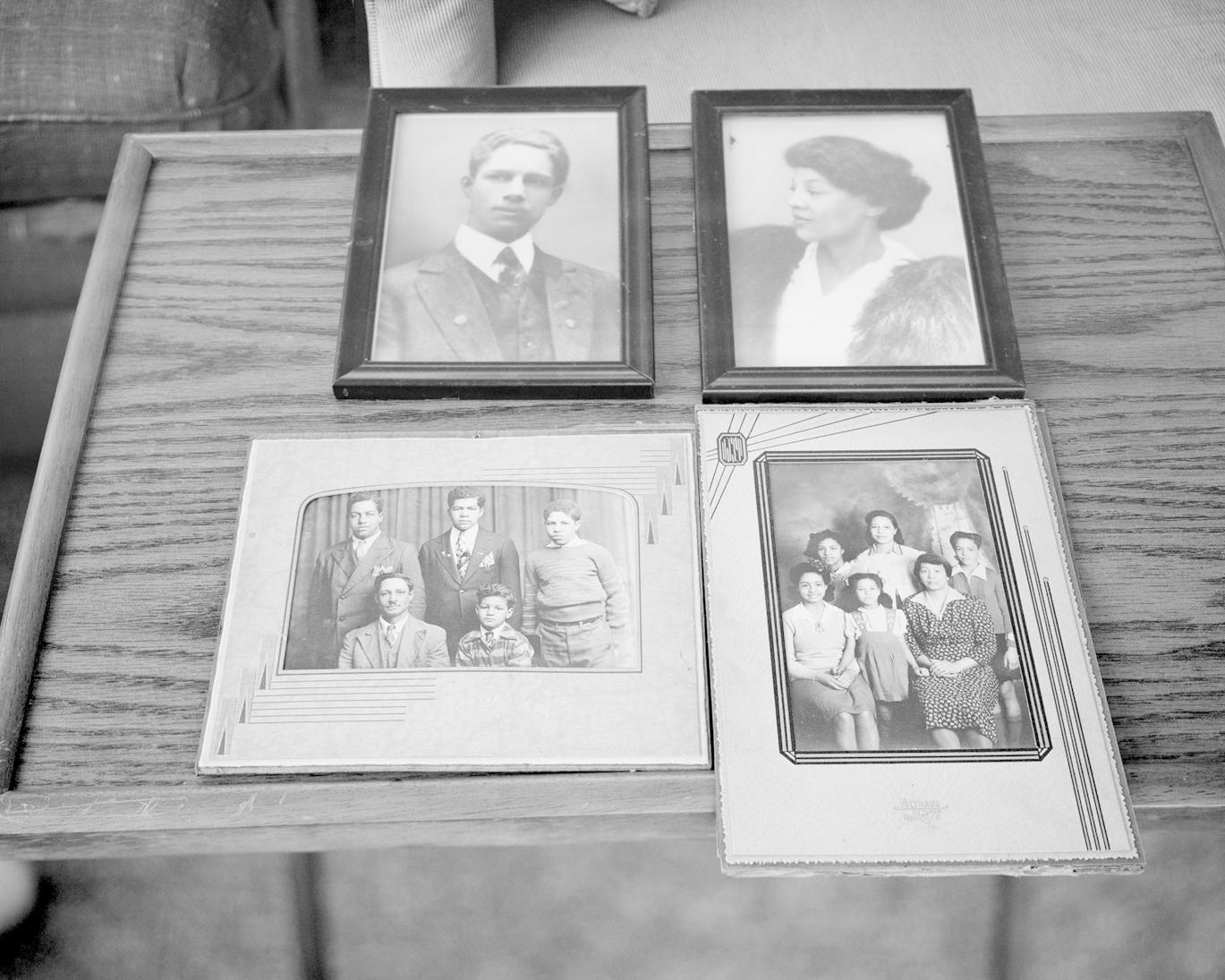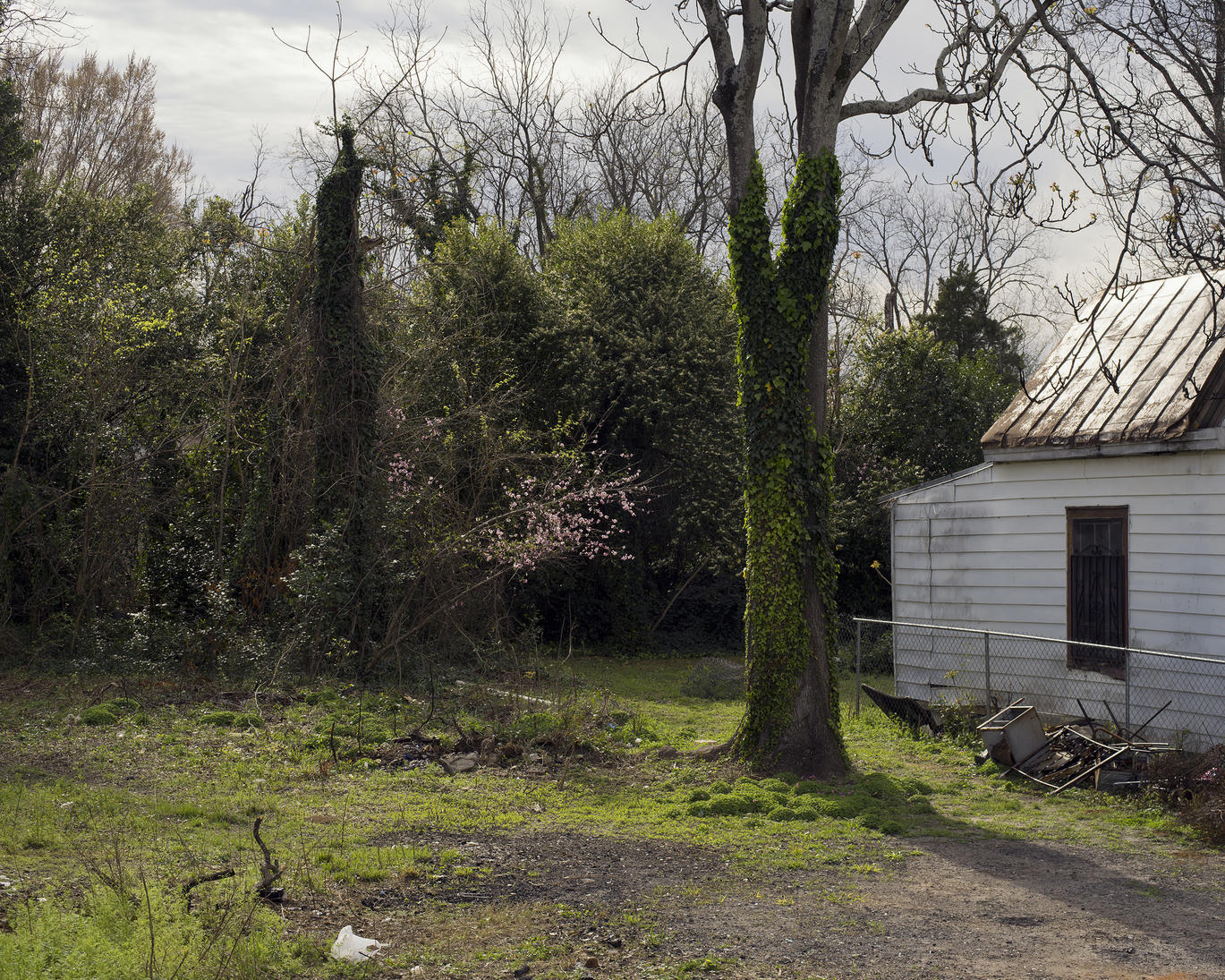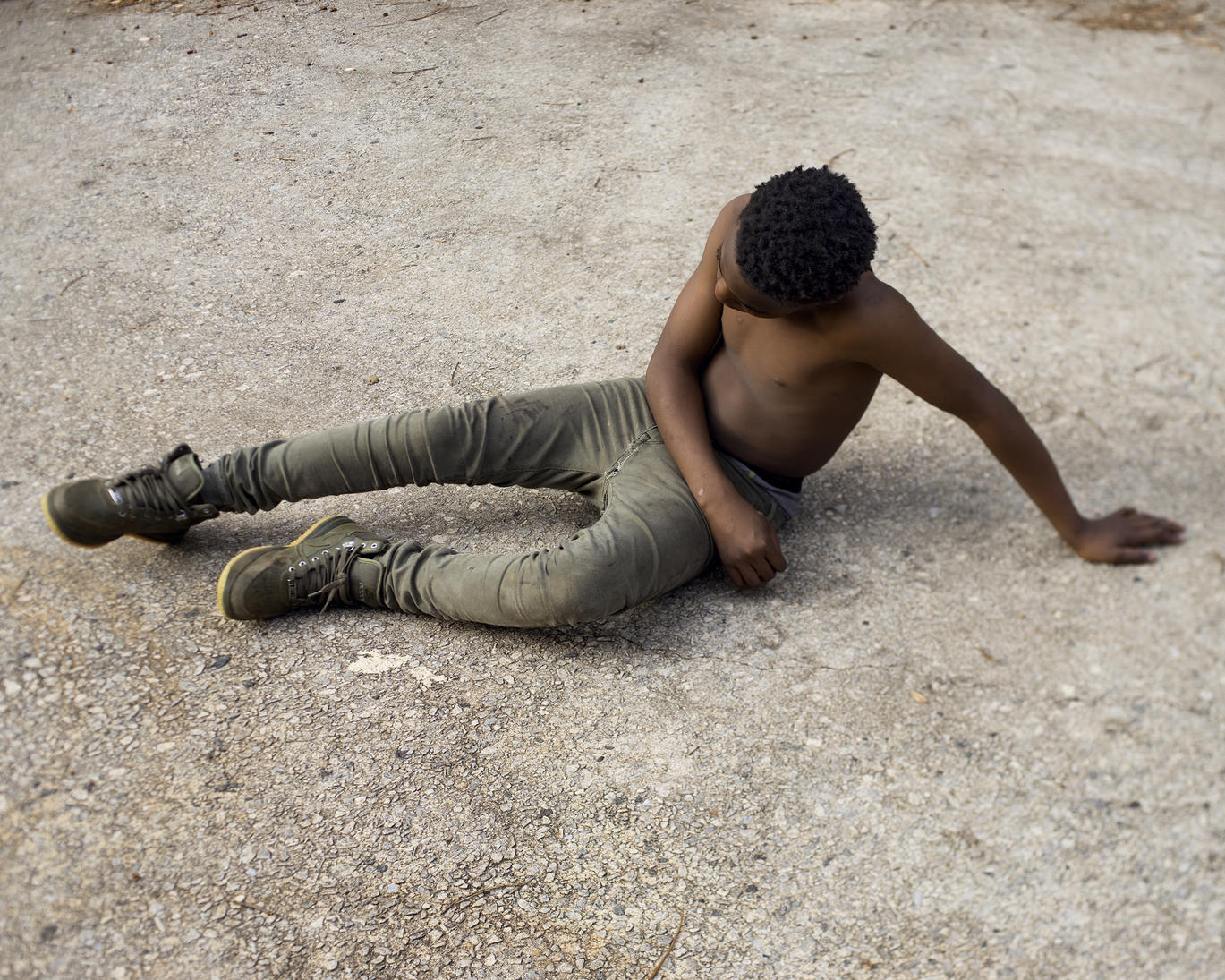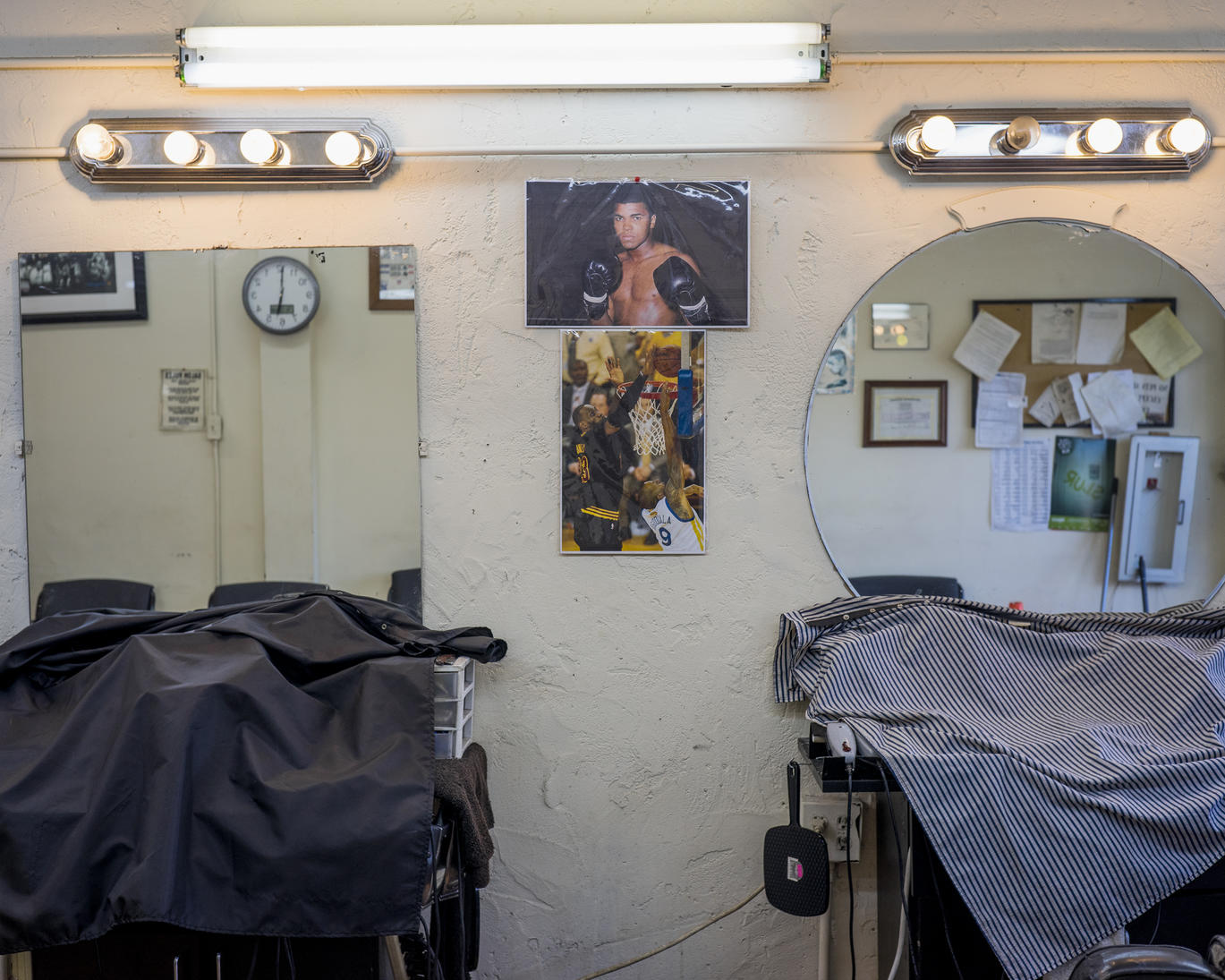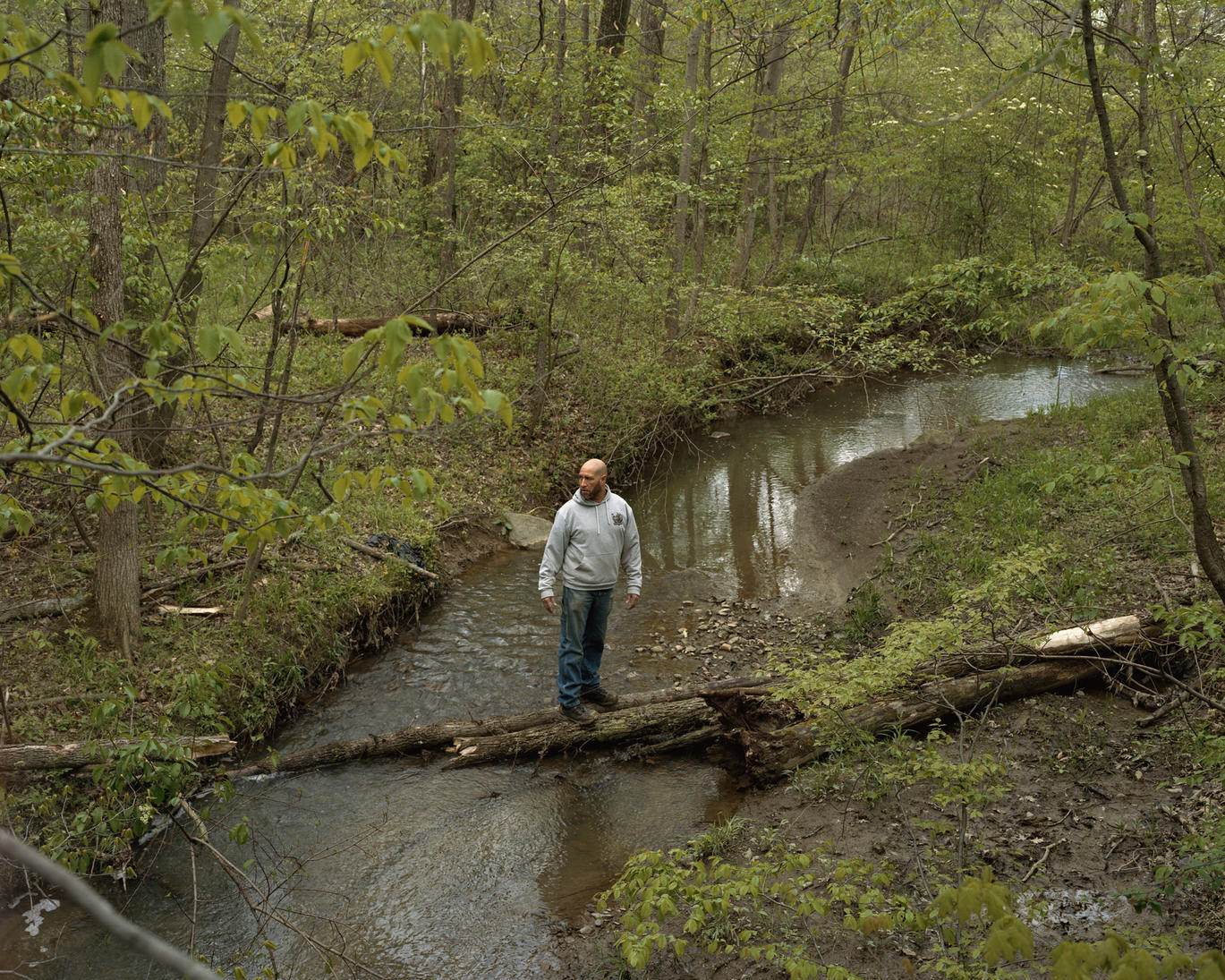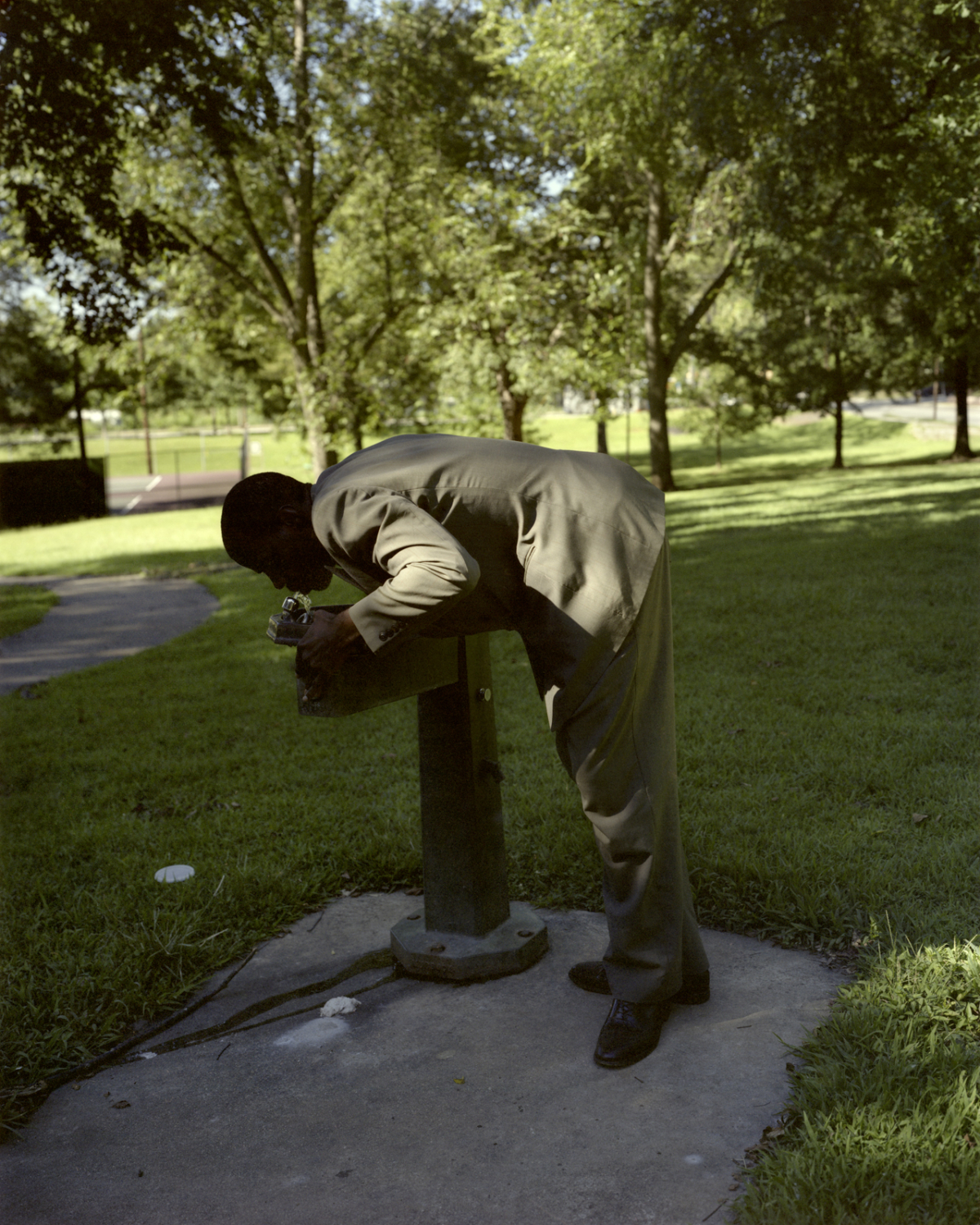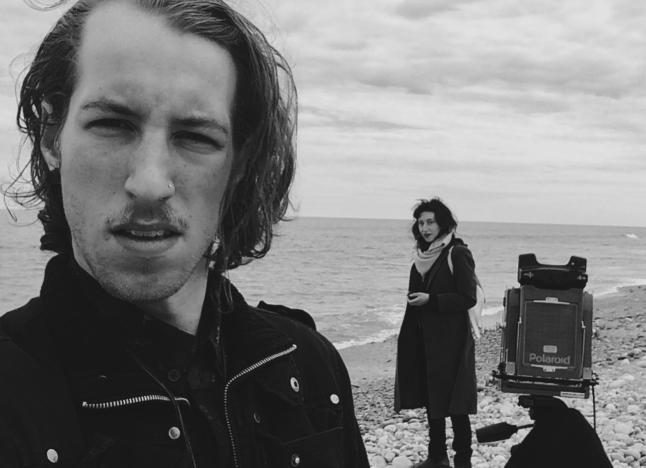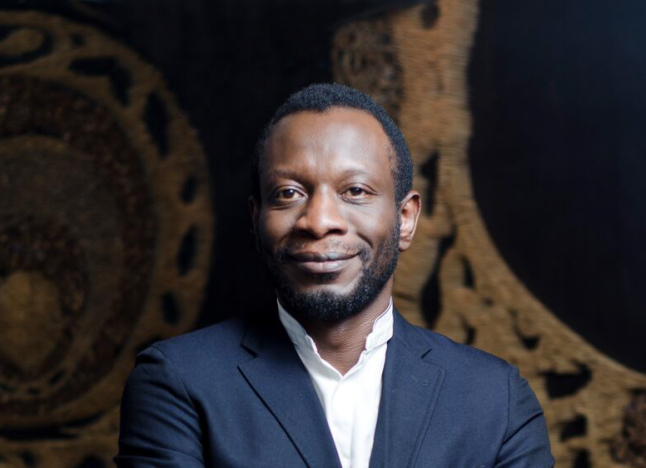Jillian Freyer
Artist Feature
Every week an artist is featured whose single image was published by Der Greif. The Feature shows the image in the original context of the series.
Alex Christopher Williams - Black, Like Paul
Nov 21, 2018
»Black Like, Paul« explores the relationship between historical, contemporary and personal experiences around issues of race, passing, and masculinity in the eastern American coast. This work focuses on male archetypes using folklore, legends, and icons as references to draw similarities between the past and today. Photographed along documented routes of migration, I use these paths to explore the spaces my ancestors inhabited to speak to larger cultural truths about black life in America. Growing up as a mixed-race boy, I was never forced to consider what my life would be like had I looked more like my father. As we continue to confront a large number of young black men facing social injustices, I am continuing to attempt to understand how different my life would be had I looked more like my father.
Artist Blog
The blog of Der Greif is written entirely by the artists who have been invited to doing an Artist-Feature. Every week, we have a different author.
Published in:
»Guest-Room Azu Nwagbogu«
Timing and the ready made
Nov 28, 2018 - Alex Christopher Williams
Most of my photographs that I enjoy have some element of surprise to them. Up until this point in my artistic career, I had been photographing in the style of the street photographers I most admired; meaning being unseen and unheard. This was the way I found the unexpected, and it’s also the way I dealt with getting access to my subjects. It’s not that I was too shy to speak to anyone who I wanted to photograph; it was that I wanted a true meaningful expression and I only knew how to do that in the moment, 1/125th of a second at a time. With this work, I went back onto the tripod to slow everything down to consider everything I was doing as well as to work towards creating the unexpected, instead of just finding it.
After making this photograph, I was made aware of its similarities to The Dying Gaul, an ancient Roman sculpture. I had no knowledge of this sculpture before making this photograph. As it happened, the picture was made as we were fixing his bike. A slight exhale and a moment of hesitation caused him to lean back and wipe the sweat from his forehead. In excitement, I yelled that he must stay still as I ran to my studio to grab my camera. It was effortless. I pulled the bike out of the frame and suggested he turn his head a nod.
I think of this picture a lot when I’m deciding whether or not to make the picture. If I have jumped out of my shoes in excitement, then its probably worth it.
Personal Narratives and Sequencing
- Alex Christopher Williams
The last photograph I am going to share is this photograph of my father. Made on my grandfather’s property far back in the uninhabited wilderness, it’s one of the two photographs I made with some sort of evidence that could lead me through history to see where I came from. My grandfather chose to return to this countryside property in his last years after spending most of his years in Oberlin, Ohio. Most notably, Oberlin was one of the last stops on the Underground Railroad for slaves fleeing the south. I often wondered if Oberlin being a safe haven for blacks was what initially brought my family to the city.
I think of this photograph showing more than just a man looking behind him but of my father looking back into history as I do. As it happens, the log he crosses the river on is broken behind him. The poetry here is short, personal, and mostly out of the frame. But pictures are activated differently depending on their sequence or the whether they’re shown alone. This is why the ultimate form of this work is in a book. My Leporello bound maquette is as delicate to hold as the issues I address in my work.
I hope that you have enjoyed the last couple of days as I have shared my thinkings on my process and photographs. Feel free to follow me on Instagram @alexxphoto and on my website at alexcwilliams.com where you can view more of the work and documents of the book.
Negatives and the Importance of Perspective
Nov 26, 2018 - Alex Christopher Williams
John Henry is an American folk hero that, while mostly unknown to the general public, he does show up in a few songs, most notably by Songs: Ohia. A statue in Talcott, West Virginia commemorates his memory as being the man who challenged a steam-powered machine to a race to dig a train tunnel. He died as a result of the race due to his heart giving to stress. I traveled to Big Bend Tunnel to photograph a statue of John Henry, in part, due to my fascination with a man who was so confident in his strength that he would challenge a machine and then win. But his story has lived long after his death because of the obvious metaphors that can be pulled from his story.
There’s something interesting that happens when you forcibly skew the perspective of a photograph by displaying it as a negative. I am particularly interested in how John Henry, who was black, is represented as white. I am also interested in how it shares a lot of qualities with the aesthetics of x-rays. The negative image strips the steel sculpture of its bold strength and, instead, displays it as a glass sculpture where his masculinity is fragile and vulnerable.
Fiction in photography and the accidental truth
Nov 23, 2018 - Alex Christopher Williams
I made this photograph a year and a half later after photographing the man at the water fountain. By this point, I had become less interested in photographing men in my father’s likeness and, instead, had become more interested in photographing boys in the age range where I was the closest to my father. In general, I don’t tend to previsualize my photographs before making them; they are always a product of the circumstance and the person I’m photographing. This boy was my neighbor, and I had photographed him many times at this point. During this time, I asked him to lean on the tree and to look at me. Later I would be surprised by how strikingly similar he looked to someone being arrested. It reverberated a lot of what is happening in the news of young black boys all over America who are being shot and killed by police.
In my statement, I talk about this wondering about how my life would have been different if I looked more like my father. The truth of this picture is that this boy is just leaning on a tree. But there is something to the innocence of his willingness in stark contrast to the bold implications of his submissive pose that leads me down a path of how my innocence as a young boy was never challenged; at least not like many young boys today. I pass as white, due to my lighter skin, and this passing was the lens in which I saw this boy utterly unaware of his predicament in the larger scale of American social politics.
Archetypes, symbols and the relevance of history
Nov 22, 2018 - Alex Christopher Williams
I wanted to take this opportunity to transcribe some of the lectures I’ve given recently to talk about some of my photographs that I believe are pivotal to my growth as an artist and artistic practice.
This is the first photograph I made for my recent body of work titled Black, Like Paul. In many ways this picture was a stroke of good luck because it would begin to shape a manifesto I would later create for this work; to make work about family by photographing men in my father’s likeness. This photograph evolved and matured as I would through graduate school as I began to think about American history and the role of fiction in photography.
I made this picture after an interaction I had with a man in the park in Atlanta, Georgia. He told me about why he wore a suit and how it demanded respect from others even though he worked in the construction industry. It was important for him to be a role model for his sons and to teach them to carry them self with dignity and respect. I thought of him as an archetype for the perfect father figure and would end up photographing him in this statue-like pose. The contrasting light and the dark shadow that obscures his identity would help emphasize the archetypal quality I saw in him.
It wasn’t until after receiving the negatives that I would fully realize the total implications of a photograph like this. In the 19th and 20th century, southern states in America had Jim Crow laws that deemed black people to be separate but equal and the results from these types of laws would help foster the rampant racism left over from the American Civil war. Water fountains are one of the icons of segregation that would be designated to whites and blacks. Of course, history would show many civil rights movements, and leaders would come from Atlanta to end this era of government-sanctioned racist laws.
I was interested in how the symbol of a water fountain, many years later, could still carry remnants of the past in my photograph. I was also interested in how this photograph transcended the identity of the man pictured to be, not of himself, but to be of any man who struggled America’s mistreatment of its peoples.


